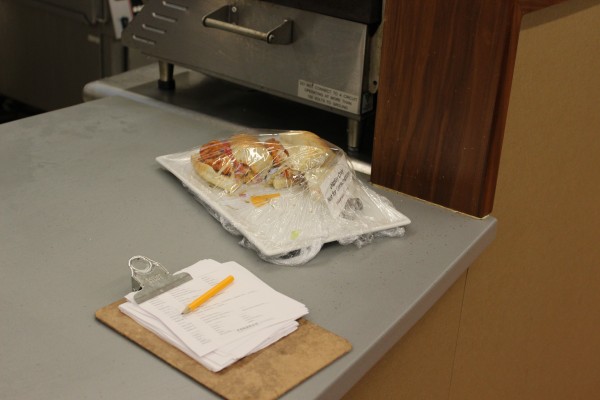We are Wasting Too Much on College Campuses
College campuses are some of the most egregious offenders when it comes to the disposal of recoverable food. (PHOTO BY ZANA NAIJAR/ THE OBSERVER)
March 1, 2016
For most of us, a trip to one of Fordham’s dining locations is a mundane activity. We get and consume the food options available to us, and when we’re finished, we throw out what is left on our plates and leave without giving any of our actions a second thought.
Our campus is very activist focused, however rarely on the environment, and one topic that should also be given consideration is the food waste we are producing.
According to Recycling Works, the average residential college student produces approximately 141.75 lbs of food waste per year. In comparison, the average non-residential college student produces approximately 37.8 lbs of food waste per year.
These numbers are based on the estimation that the average residential student consumes 405 meals per year at campus dining locations, while a non-residential student consumes only 108 meals per year at campus dining locations.
If you apply those numbers to Fordham, the residents of the Lincoln Center campus alone could be producing up to 189,519.75 lbs of food waste per year. That is 1.82 tons of food waste per week.
If you add the Rose Hill residents to the equation, the number climbs to 683,803 lbs per year, or 6.57 tons per week.
With this high amount of food waste comes the issue of reducing it. While the answer may simply seem to be preparing less food, a more effective and beneficial solution would be to take the recoverable food waste and donate it to food pantries and organizations that aid those who need it.
Recently, France became the first nation in the world to forbid supermarkets from disposing of recoverable food waste. They are now obligated by law to donate it to food pantries and similar organizations. This policy in turn will both reduce food waste and will help feed France’s hungry.
Unlike college cafeterias, however, supermarkets are donating food that has not already been cooked. Due to this difference, a similar law could not be implemented for U.S. colleges, but colleges can take other initiatives to reduce their food waste while helping the hungry.
One such solution is the Food Security Network (FRN), an organization of college campuses that focuses on recovering food waste and donating it to partner organizations that aid the hungry.
Fordham did start an initiative to join the network in November in partnership with Sodexo, helping to reduce the aforementioned amounts of food waste while carrying out the university’s goal of social justice. Through this program, portions of Fordham’s food waste are recovered and given to Part of the Solution (POTS), a soup kitchen in the Bronx.
Currently, there are seven students/members who participate in Fordham’s FRN team, according to John Azzopardi, resident district manager of on-site service solutions for Sodexo. This team, based out of the Rose Hill campus, convenes four times a week, consisting of two nights to recover food and two days to pack and deliver the food to POTS. Through this program, Sodexo and Fordham have donated “over 2,500 pounds of food, which has provided over 1,700 meals [since November],” according to Azzopardi. Azzopardi said that there are also plans to double membership and double recovery of the program by the end of the semester. He also stated that Sodexo is looking to involve the Lincoln Center campus in this program as well, and to become fully certified with the FRN.
While this program only makes a dent in the food waste the university is producing, it is a step in the right direction. Even more so, it helps serve the homeless and food insecure in our area. According to the USDA, approximately 14 percent of U.S. households face food insecurity in 2014. According to the National Alliance to End Homelessness, 564,708 were homeless in January 2015. Given these statistics, the need for more programs such as the FRN at Fordham and at all universities becomes apparent. By following the lead of France and the FRN, universities can take concrete steps in reducing their carbon footprints and contributing to their communities by addressing food insecurity.
My hope is that given the university’s beginning involvement with the FRN, Sodexo and Fordham will continue its initiative to recover its food waste and donate it to those that need it. If a new dining service provider is chosen in the ongoing selection process, it is important that that new provider continues the university’s relationship with the FRN and introduces new initiatives to recover and donate Fordham’s food waste










